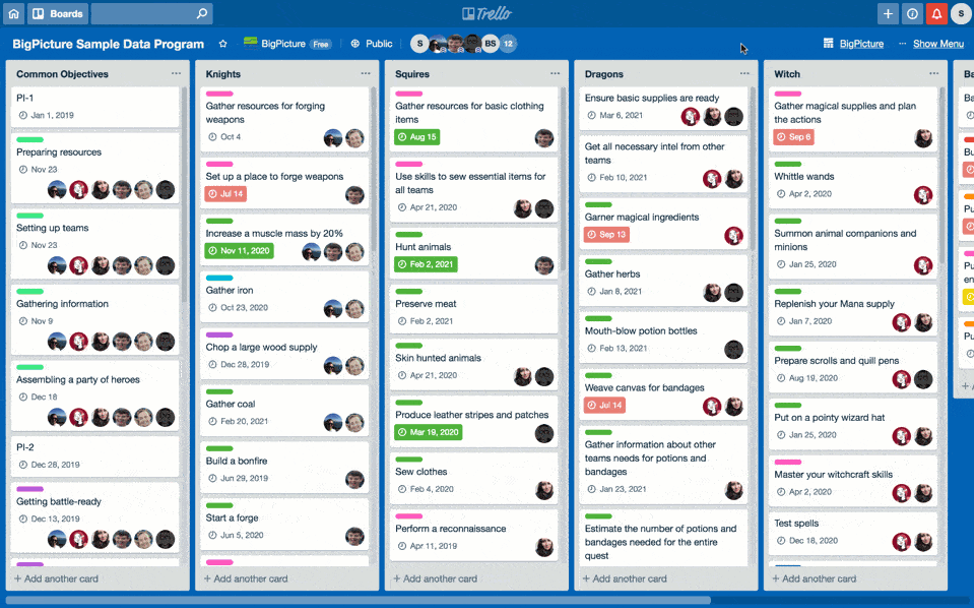
The question keeps popping up: should I lower my rates now? While we would like to be able to offer a succinct answer, the truth is, like so many things: it’s complicated. To drill down to the best way to frame the question for you, I interviewed three leading Creative Circle superstar recruiters — two on the record, one off. Check out what these experts had to say.
Shannon Robinson — Senior Recruiter, Los Angeles Office
Shannon was full of vim and vigor and had a lot to say about the topic. Her take on this issue is the same for freelancers, permalancers, and full-timers — and marches stridently in one direction — can you guess what that might be?
Flexibility is a must.
Agencies live and die by their clients — we’re going to see a lot of agencies closing down. And they’re not coming back. It’s going to be a client market 150%, so this is what I’m saying to candidates: there are fewer positions, there are other superstars out there — so right now you have to be f l e x i b l e. No ifs, ands, or buts about it. Being flexible is not an indicator of your worth — it’s a sign that you have to ebb and flow with the market — and a hungry market demands flexibility.
You have to make it to tomorrow to make it to next week.
One step at a time. One day at a time. Yes, it may not be the rate you were targeting, but you have to make the best decision with what is in front of you now. Take the opportunity. Move forward. You have to be able to pay for your life today in order to be around for tomorrow.
Sometimes it’s as much about the opportunity as it is about the money.
You don’t know what the opportunity might become. If you do a great job once you’re in, you may be able to grow your role and move up internally. It’s smart to start creative buzz for yourself in the marketplace, not on LinkedIn.
Yes, money — but you have to have those benefits.
If you’re on the wrong side of the benefits game, it can break you. In an unsure market, the best you can do is to have the benefit of corporate benefits on your side. Full-time work is where it’s at if you get the opportunity (see above). Remember that doing freelance work with Creative Circle can also position you for benefits eligibility! In these unstable times, gaining a semblance of stability is king and queen.
Being employed during this pandemic is a good story. Your narrative matters.
It’s a much more compelling story to say that you were employed during the pandemic. Your narrative matters. If there’s an opportunity that you’re a fit for — despite the compensation being less than you’re usually paid — you need to definitely move forward.
Where the work will be is changing. You want to be ready for the next chapter.
As you might suspect, the creative work landscape will not look like it did pre-COVID-19. The BIG question: where do we end up when this is all said and done? People are learning how to broadcast and produce work off-site utilizing digital production tools — and doing so more quickly and cheaply. But that doesn’t mean there won’t be opportunity, it will just be different opportunity. Someone will still need to do post-production — edit, create graphics, for example. The money will be reallocated in the next normal, and everyone needs to strategically reposition themselves to be as competitive as possible for when the market opens back up. Yes, this is going to be a challenging time — but I truly believe that when we finally come out the other side that we will come out better for it.
Senior Recruiter—New York City Office
This savvy NYC recruiter wanted to stay off the record but had many choice insights to share. With no clear black or white answers, this top recruiter gave some nuance to the factors one should consider when deciding to take a lower rate or not. With such a quick flip from a candidate market to a client one, recruiters have a significantly different job ahead to get candidates’ work. For a while, it may be a race to the bottom — but only for a bit. Pointing out that this is a very different situation than what happened in 2008, there was one lesson from that time that seems congruent: when recovery does happen, it will be strong.
Only be flexible for now.
“I can do this for $X for the next three months, but please know what my real rate is.” Communication is paramount: discuss that you are willing to work for less for a period of time. Let a client know what you are typically paid, and set a period of time after which you re-visit pay. You have to be fairly assertive and honest with your client or recruiter.
A. How long?
B. How much?
C. Who is it?
This is the rubric by which to decide whether or not to take an opportunity for less money. Length of assignment makes a difference in assessing whether you should take a lower rate or not. As well, how much of a lower rate? Is it just $10 an hour less, or significantly more? Depending on the company, you might be more (or less) willing to work for less. Everyone has their own values. Everyone has a different privilege level. But if you need a #@^&! job, benefits, stability — be flexible.
- Short assignment vs. long: length matters.
If the job is only three weeks long, the rate matters less. For shorter-term project work, it’s a lot easier to have flexibility — and no one in the future will know that you took a lower rate. For longer-term assignments, however, setting expectations is much more significant. My advice is to not take a long-term engagement at a lower rate if you can help it — and full-time opportunities are a different story altogether. - Is it a resume-builder?
Are you being offered an opportunity with a fabulous company, but at a lower rate than you’d like? If it’s a resume-builder, it may be worthwhile to take the role and be flexible with the rate. Building bridges with a company that you’d love to be connected with has value beyond the “benjamins.”
Freelance vs. Full-time: NOT the same when it comes to taking a lower rate.
Here’s why: in most states, employers are legally allowed to ask what you made at your last job. And they are allowed to check to make sure that you are being honest (not being honest could be cause for the job offer to be withdrawn). Because so many women and people of color start at lower salaries, having to disclose salary history as a basis for future pay became an entrenched form of discrimination.
It was only on October 31, 2017, that a Pay History ban went into effect in New York, which made it illegal to ask a candidate what they had made previously and to base salary for the new job on what a person had made at their last one. 18 states have since followed suit, a step in the right direction toward equalizing pay between women and men, and for people of color — but one that leaves the majority of the country unprotected. Because of this, you need to check where your particular state falls when making a decision about taking a job at a lower salary. Depending on where you are, taking a lower rate may allow the market to take advantage of you going forward. If you’re in a protected state, however, you have less to lose. So if you take a “step backward” due to the pandemic, and you’re in one of the 18 states with a Pay History Ban, I might advocate for greater flexibility than if you’re in one of the 32 states that don’t have a ban.
No one size fits all.
Everyone has their own pain points. If you have a family and need security and benefits — you need to take what you can. If you have to pay the bills, you have to balance ego with practicality. It’s simple, really: do what you need to do to pay the bills.
For freelance work, remove the ego. It’s a transaction. Ask yourself: does the transaction work for you? For full-time opportunities, however, keep the ego in — it’s your life.
Jocelyn Yant—Senior Recruiter, New York City Office
Jocelyn took a mindful and considered approach to answering the question about whether or not one should lower their rates at this time. But before she dug into her feelings on the matter, she wanted to share some macro, overarching thoughts on what’s happening in the job market from her vantage point.
Here are some of Jocelyn’s macro insights into the state of work today:
- Let’s call it a slowdown.
Some full-time job offers are still coming in — not as many — but some. The market has slowed, but there is still work. Clients are taking some time to figure out logistics, how to delegate work, best practices to migrate in-house processes to virtual ones. I am hoping to see a lift in jobs in the next few weeks as companies get their “sea legs.” We are finding that some clients are starting to offer positions as remote-for-now. When the pause stops and the economy re-opens, the job will then become an on-site role. - Companies realizing the benefits of remote work.
One of the positive effects of this pandemic is that with moving whole teams remote, some of our clients are realizing that there’s a benefit to having all employees work virtually. They can save millions of dollars on real estate and facility/equipment expenses. - Virtual work opens up work opportunities to a broader swath of workers.
Another plus: people who had been left out previously by on-site work environments, like those caring for a sick family member, can be integrated into this new era of work. It’s nice to see that this is a real possible outcome. For all the challenges that COVID has brought — and yes, there are many — I think it’s also important to talk about the positive possibilities that are opened up.
Now, let’s get to the question at hand: should you or should you not lower your rates?
In late March, when the COVID-19 pause began, we had call after call about furloughs and lay-offs. But we also had a lot of clients calling to see about hiring; however, they were negotiating rates down. Here’s my take:
- There’s a benefit to working at this time if you can. It keeps your portfolio fresh. You stay connected to the work world, and this opportunity may grow into something larger down the road.
- There are some workarounds to lower rates.
If you are considering taking a large cut, you can do things to buffer it in the future. Communication at the outset is key. One option is to negotiate a “COVID-19 rate” that flips to a different rate post-pause. Set expectations now so that you can feel that you are advocating for yourself. By negotiating ahead of time, you can soften some of the impact. - What happens today does not necessarily determine what happens tomorrow.
Applying to a job that’s “below your rate” doesn’t mean you won’t get jobs at higher rates later — particularly for freelance. I am less concerned about someone being pigeonholed at a lower rate — especially for project-based work. When my candidates apply for jobs paying below their usual or target rates, I reassure them that this is for now, not necessarily for later.
There are some key factors to take into account that should be part of your decision-making around whether or not to lower your rates.
- Length of engagement
- Freelance opportunity
- Full-time opportunity
- What economic state you’re in
- Value in keeping creative juices flowing
- Value in keeping portfolio up to date
- Value in keeping a relationship with a client that may be ongoing in the future, aka the potential for future work. If you excel, you don’t know what the opportunity lead to.
Taking a lower rate for two months is different than agreeing to a lower rate for a year. Of course, if you are in a situation where you need to make money — then you should take the role, even if it pays less.
For some of us, working keeps the worry away. If you’re one of those people who fares better in uncertain times by having a task at hand, then taking a project on may have value beyond the economic.
With respect to full-time roles — most states can legally ask what you made in your last job. You may want to put some special consideration to accepting a lower rate with these types of opportunities as there could be reverberations down the line in terms of salary. It’s a matter of the economic state you’re in today impacting the financial state you’ll be in tomorrow. In short, there are many variables to consider. It’s not a cut and dry answer.
A lot of our clients DO have work that they need done. To candidates, I counsel optimism.
There are logistical hurdles as companies balance their needs against a quickly shifting landscape. I was here for 2008 in New York. The economy was in the toilet. It took NYC a year, year and a half, but the economy came roaring back stronger than ever. NYC, in particular, is aided by its diversity of industry: advertising, design agencies, finance, professional services, e-commerce, fashion, retail. The variety of opportunities across sectors will help things pick up more quickly here.
About the author.
An award-winning creator and digital health, wellness, and lifestyle content strategist — Karina writes, edits, and produces engaging content across multiple platforms — including articles, video, interactive tools, and documentary film. Her work has been featured on MSN Lifestyle, Apartment Therapy, Goop, Psycom, Pregnancy & Newborn, Eat This Not That, thirdAGE, and Remedy Health Media digital properties. You can see more of her work at karinamargit.com.











